




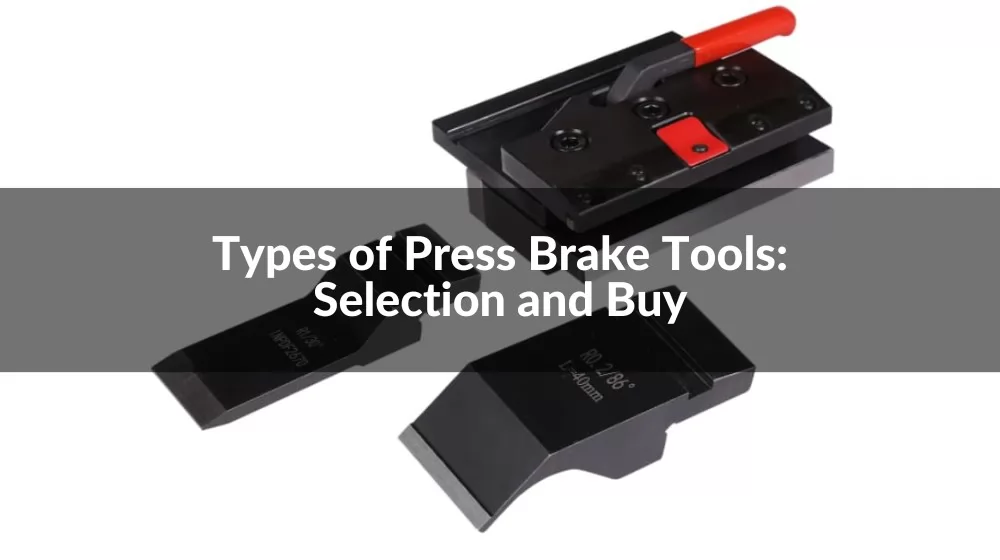
Navigating the complexities of press brake tooling selection can be a daunting task for fabricators and manufacturers alike. With the right knowledge and tools, however, it's possible to streamline the process, ensuring precision, efficiency, and quality in every bend. This article delves deep into the world of press brake tooling, covering everything from basic definitions to material considerations and types of punches. Whether you're in the automotive, aerospace, or construction industry, understanding these key aspects will empower you to make informed decisions, optimize your operations, and achieve unparalleled results in metal fabrication.
When we talk about the heart of metal fabrication, press brake tooling jumps to the forefront. But what exactly is press brake tooling, and why does it hold such a pivotal role in manufacturing? Simply put, press brake tooling comprises the various tools and dies that are used in a press brake machine, a piece of equipment essential for bending sheet metal into desired shapes and sizes. This tooling is not a one-size-fits-all affair. Instead, it includes a plethora of types, each designed to accomplish specific bends, angles, and shapes, thereby transforming a flat sheet of metal into a work of art, or more precisely, a functional part.
The magic of press brake tooling lies in its versatility. From simple, straight bends to complex, multi-angle folds, the right tooling setup empowers manufacturers to achieve precision and efficiency in their metal fabrication processes. This is where the beauty of customization comes into play; with an array of punches, dies, and other accessories at their disposal, engineers can tailor the tooling to meet the exact requirements of their projects. Whether it’s forming a delicate component for the aerospace industry or crafting a sturdy frame for construction equipment, the correct press brake tooling makes it all possible.
But it's not just about bending metal. The right selection of press brake tooling directly impacts the quality of the finished product, the speed of production, and ultimately, the bottom line. This underscores the importance of understanding the different types of tooling available and selecting the appropriate ones for your specific applications. In doing so, manufacturers can avoid costly errors, reduce waste, and enhance the overall efficiency of their operations. Thus, press brake tooling is more than just a set of tools; it's a foundational element of the metal fabrication industry that drives innovation, quality, and success.
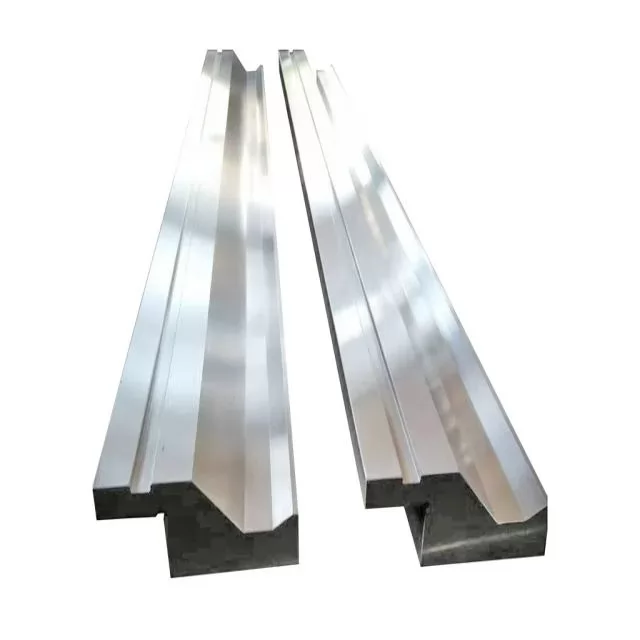
Selecting the right press brake punches is crucial for any metal fabrication project. The choice you make affects not only the quality of the bend but also the efficiency and safety of the operation. Let’s dive into the essential criteria to consider when choosing your press brake punches: material thickness and type, bending angles and radii, and machine compatibility.
The thickness and type of material you plan to bend are paramount in selecting the appropriate punch. Different materials have varying levels of hardness and elasticity, which influence the choice of tooling. For instance, softer materials like aluminum may require different punches than harder materials like stainless steel or titanium. The thickness of the material also dictates the required punch force and, consequently, the type of press brake tooling. It's essential to match the tooling specifications with the material properties to prevent tool damage and ensure a precise bend.
The desired bending angles and radii are critical factors in the selection process. Different punches are designed to achieve specific bends, and using the wrong type can result in inaccurate bending angles or undesired radii. Acute angles and tight radii may require specialized punches with sharper tips or those made from harder materials to maintain precision throughout the bend. Understanding the project's requirements in terms of angles and radii will guide you in choosing the most suitable punch for the job.
Lastly, the compatibility of the punches with your press brake machine is a non-negotiable criterion. Not all punches fit all machines, and selecting incompatible tooling can halt production and lead to unnecessary expenses. It’s essential to consider the tool clamping system, the tonnage capacity of the press brake, and the length of the tooling in relation to the machine's specifications. Ensuring compatibility maximizes the efficiency of your operations and extends the lifespan of both the machine and the tooling.
Understanding the practical applications of press brake tooling across various industries can shed light on its versatility and importance. From the automotive to aerospace and construction sectors, the use of press brake tooling is pivotal in shaping materials into precise components. Let's explore some of these applications and delve into case studies that highlight the effectiveness of press brake tooling in real-world scenarios.
Press brake tooling plays a crucial role in many industries, enabling the creation of intricate parts and structures with high precision. Its applications are wide-ranging, affecting the quality, efficiency, and innovation within each sector.
In the automotive industry, press brake tooling is instrumental in manufacturing various components such as chassis parts, brackets, and other structural elements. The precision and versatility of press brake machines allow for the bending of complex parts that meet strict automotive standards. For instance, a leading automotive manufacturer utilized advanced press brake tooling to streamline the production of car bodies, resulting in enhanced precision, reduced waste, and increased production speed.
The aerospace sector demands the highest levels of precision and reliability, and press brake tooling steps up to the plate. Used in the fabrication of airframe structures, engine components, and landing gear parts, the right tooling ensures components can withstand the rigorous demands of aerospace operations. A case study from an aerospace manufacturer showcases the use of specialized press brake tooling to achieve ultra-precise bends in aircraft-grade aluminum, significantly improving the aerodynamics and structural integrity of their aircraft.
In construction, press brake tooling is vital for creating metal framing, supports, and architectural elements. The ability to bend large and thick plates accurately is essential for building structures that are both aesthetically pleasing and structurally sound. A notable case study involves a construction company that leveraged high-tonnage press brake machines with custom tooling to fabricate steel beams for a large commercial building, showcasing the tooling’s capability to handle heavy-duty materials with unmatched precision.
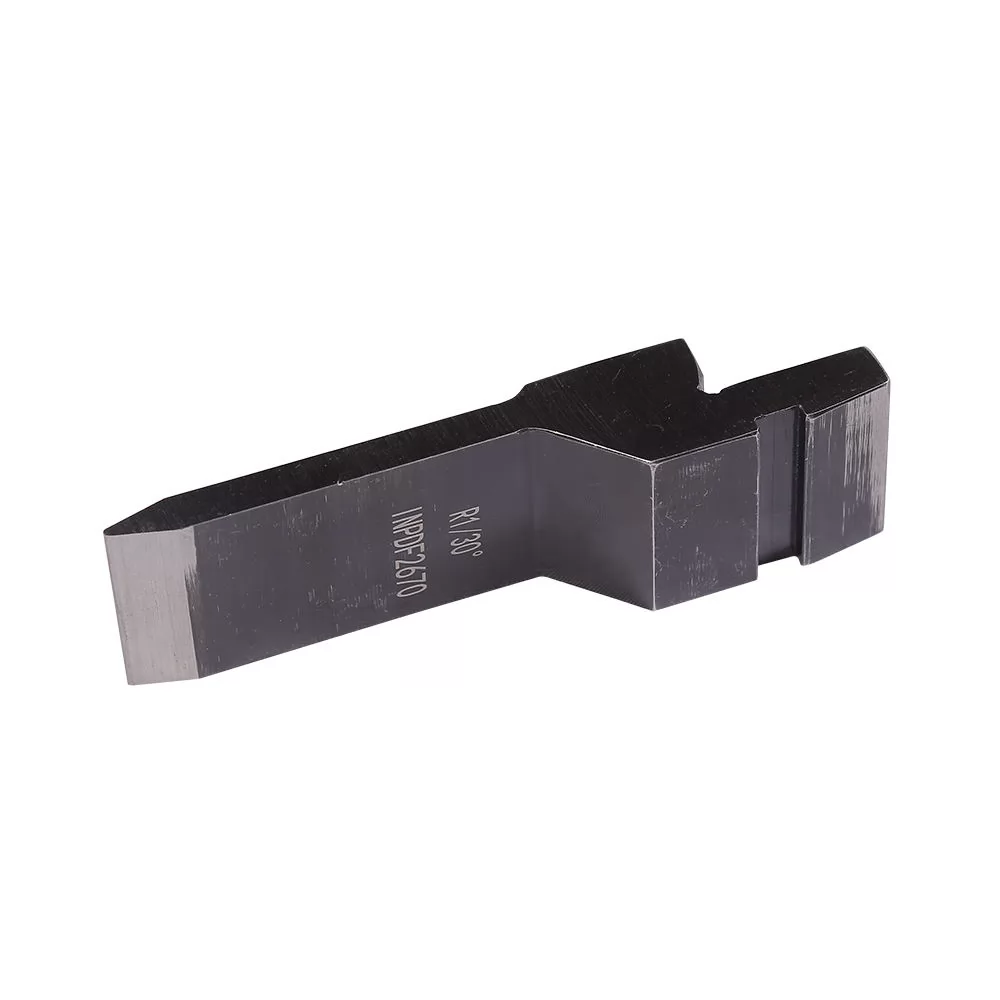
Press brake tooling is a cornerstone of precision metal fabrication, offering the ability to shape and bend metal sheets with accuracy and efficiency. The diversity in tooling types enables fabricators to achieve specific bends, angles, and shapes, catering to the unique requirements of various industries. From standard punches and dies that handle common bending tasks to specialized tooling designed for unique applications, understanding the full spectrum of press brake tooling is essential for optimizing production processes and ensuring high-quality results. Let's embark on a detailed exploration of the myriad types of press brake tooling, including punches, dies, tool holders, backgauges, crowning systems, and safety devices, to shed light on their distinct functions and applications.
Punches are the upper component of the press brake tooling setup, coming into direct contact with the material to create the bend. Each type of punch is designed to fulfill a specific bending requirement, from simple straight bends to complex profiles. The variety of punches available ensures that fabricators can select the ideal tool for their project, maximizing efficiency and achieving precise results.
Dies form the lower part of the tooling setup and work in conjunction with punches to shape the metal. The selection of the correct die is as important as choosing the appropriate punch, with each type of die serving a different purpose in the bending process.
The tool holder plays a critical role in the press brake setup, securing the punch and die in the correct position. This ensures accurate alignment and stability during the bending process, contributing to the precision and safety of operations.
Backgauges are sophisticated systems used to control the position of the workpiece accurately. They are vital for achieving consistent bending operations, especially when working with complex parts or when high repeatability is required.
Crowning systems are designed to compensate for machine deflection during bending, ensuring uniform pressure distribution across the length of the bend. This results in consistent bend angles, a critical factor for quality control in metal fabrication.
Safety devices, such as light curtains and laser safety systems, are essential for protecting operators from the hazards associated with press brake operation. These devices help prevent accidents, ensuring a safe working environment.
This detailed exploration of press brake tooling underscores the importance of selecting the right tools for specific bending tasks. With an understanding of the various types of punches, dies, and supporting systems, fabricators can enhance their operations' efficiency, precision, and safety. As technology advances, staying informed about the latest tooling innovations will continue to be crucial for success in the competitive field of metal fabrication.
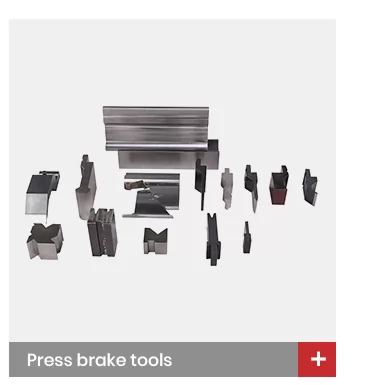
The effectiveness, durability, and overall performance of press brake punches are significantly influenced by the materials from which they are made. Selecting the right tool steel grade, understanding the benefits of coatings and treatments, and considering the durability and wear resistance are critical factors in optimizing tool life and operational efficiency. Let’s delve into these material considerations that are foundational in choosing punches that meet the demands of rigorous metal fabrication processes.
Tool steel is the primary material used in the manufacture of press brake punches, known for its hardness, strength, and ability to withstand high pressures. Various grades of tool steel cater to different bending operations and environments. For example, A2 tool steel is prized for its wear resistance and toughness, making it suitable for high-volume bending operations. D2 tool steel, on the other hand, offers even higher wear resistance and is ideal for bending harder materials. The selection of the appropriate steel grade is crucial in balancing durability and performance against the specific requirements of the bending process.
To enhance the performance and lifespan of press brake punches, various coatings and treatments can be applied. These surface modifications are designed to reduce friction, resist wear, and protect against corrosion. Titanium nitride (TiN) coating, for example, not only gives punches a distinctive gold color but also significantly increases their surface hardness and reduces wear. Cryogenic treatments, which involve cooling the steel to very low temperatures, can improve the material's durability by altering its microstructure. These treatments ensure that the punches can handle the demands of bending operations longer and more effectively.
Durability and wear resistance are essential qualities for press brake punches, directly impacting the tool's lifespan and the quality of the bends. Tools that exhibit high durability and resistance to wear can maintain their shape and dimensions over many cycles, ensuring consistent bending results. Factors contributing to these qualities include the base material of the tool, the presence and type of coatings or treatments, and the maintenance practices employed. Regular inspections and proper storage are also crucial in preserving the punch's integrity and performance.
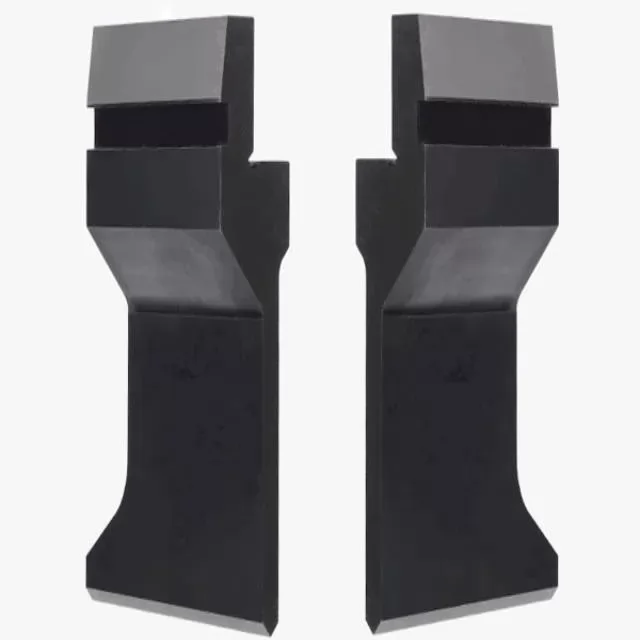
Selecting the right style of press brake tooling is crucial for metal fabricators, as it directly impacts the efficiency, versatility, and quality of bending operations. The tooling style determines not only the compatibility with press brake machines but also the range of bending applications that can be achieved. Three main styles dominate the industry: American Standard Tooling, European Precision Style Tooling, and the Wila Trumpf Tooling System. Each offers unique advantages and specifications tailored to various fabrication needs and preferences.
American Standard Tooling, also known as conventional tooling, is characterized by its robust design and versatility. This style is widely used in the United States and is known for its compatibility with a wide range of press brake machines. American Standard Tooling often features a segmented design, allowing fabricators to configure the tooling setup according to specific job requirements. The versatility and ease of use make it a popular choice for a broad spectrum of bending operations, from simple to complex profiles.
European Precision Style Tooling is renowned for its high accuracy and quick setup times. This style incorporates precision-ground surfaces and a standardized clamping system, facilitating rapid tool changes and enhancing operational efficiency. The precision and modularity of European tooling make it ideal for applications requiring high levels of accuracy and fine detailing. Moreover, its compatibility with CNC press brakes enhances its appeal for high-volume and technically demanding fabrication tasks.
The Wila Trumpf Tooling System represents the pinnacle of tooling technology, offering unparalleled precision, flexibility, and safety. This system is designed for use with high-end press brakes and is distinguished by its innovative clamping and crowning mechanisms. The Wila Trumpf system allows for extremely precise adjustments and is ideal for complex, high-precision bending applications. Its emphasis on ergonomics and operator safety further sets it apart, making it a preferred choice for advanced metal fabrication projects.
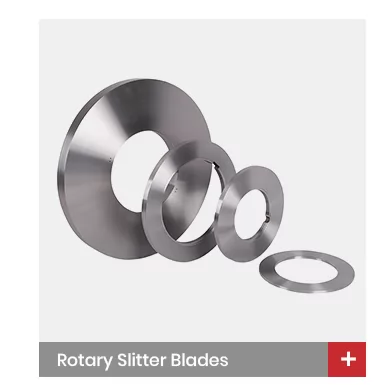
Selecting the right press brake tooling is a multifaceted decision that significantly impacts the efficiency, quality, and cost-effectiveness of metal fabrication processes. The choice of tooling should be guided by a comprehensive understanding of the specific project requirements and the capabilities of the available tooling options. Here are several key factors to consider when choosing the right press brake tooling for your metal fabrication needs.
Different materials have unique properties that affect how they respond to bending. Factors such as hardness, tensile strength, and ductility determine the suitability of certain tooling for specific materials.
The thickness of the material being bent plays a crucial role in selecting tooling. Thicker materials require tooling that can withstand higher bending forces without deforming.
The length of the workpiece influences the type of tooling and press brake required. Longer pieces may require specialized tooling configurations or additional support.
The desired bend angle affects the choice of punch and die, as different tooling designs are optimized for specific angle ranges.
A tight bend radius may require specialized tooling with enhanced strength and precision to achieve the desired curvature without damaging the material.
Complex bend shapes, such as U-bends or offset bends, necessitate tooling that can accommodate these shapes while maintaining accuracy and integrity of the workpiece.
Air bending, bottoming, and coining are common bending methods, each requiring specific tooling characteristics for optimal performance.
Tooling costs can vary widely based on material, precision, and brand. Balancing cost with the requirements of the job is crucial for economic efficiency.
Different brands offer varying levels of quality, compatibility, and support. Choosing a reputable brand can ensure reliability and longevity of the tooling.
High production volumes may necessitate tooling that is designed for durability and rapid setup changes to minimize downtime.
Ensuring that the tooling is compatible with the specific press brake machine being used is essential for smooth operation and optimal results.
The tooling must be capable of handling the tonnage required by the bending process, as exceeding the tooling's tonnage capacity can lead to tool failure and damage to the press brake.
In conclusion, the selection of press brake tooling is a pivotal factor in the success of any metal fabrication operation. By considering the types of punches, material specifications, and application requirements, manufacturers can significantly enhance their production capabilities. For those seeking the highest quality press brake tools, Shinite, a leading manufacturer of press brake tools, offers an extensive range of products designed to meet the diverse needs of the global metal fabrication industry. Embrace the excellence of Shinite's press brake tools to elevate your manufacturing processes, ensuring precision, durability, and efficiency at every turn.








Fastest
Installation

Top-Notch
Equipment

24/7 Customer
Support

100% Secured
Payment
